The WWF is run at a local level by the following offices...
- WWF Global
- Adria
- Argentina
- Armenia
- AsiaPacific
- Australia
- Austria
- Azerbaijan
- Belgium
- Bhutan
- Bolivia
- Borneo
- Brazil
- Bulgaria
- Cambodia
- Cameroon
- Canada
- Caucasus
- Central African Republic
- Central America
- Central Asia
- Chile
- China
- Colombia
- Croatia
- Democratic Republic of the Congo
- Denmark
- Ecuador
- European Policy Office
- Finland
The African savannah stretches out like an ocean of gold, its tall grasses bending and swaying under a warm breeze. The sky above is impossibly wide, so open it feels as though the land could simply drift upward into it. The morning light is soft, with smooth blowing winds, casting long shadows and giving the scene a painted glow. Somewhere in this vast expanse, a faint ripple of movement disturbs the horizon. At first, it’s just a shifting in the grasses. Then, as if conjured by the light itself, a figure emerges, long-legged, lean, moving with a fluid grace. Its coat is a striking mosaic of black, yellow, brown, and white, each patch distinct, as if brushed on by an artist with no thought for symmetry.
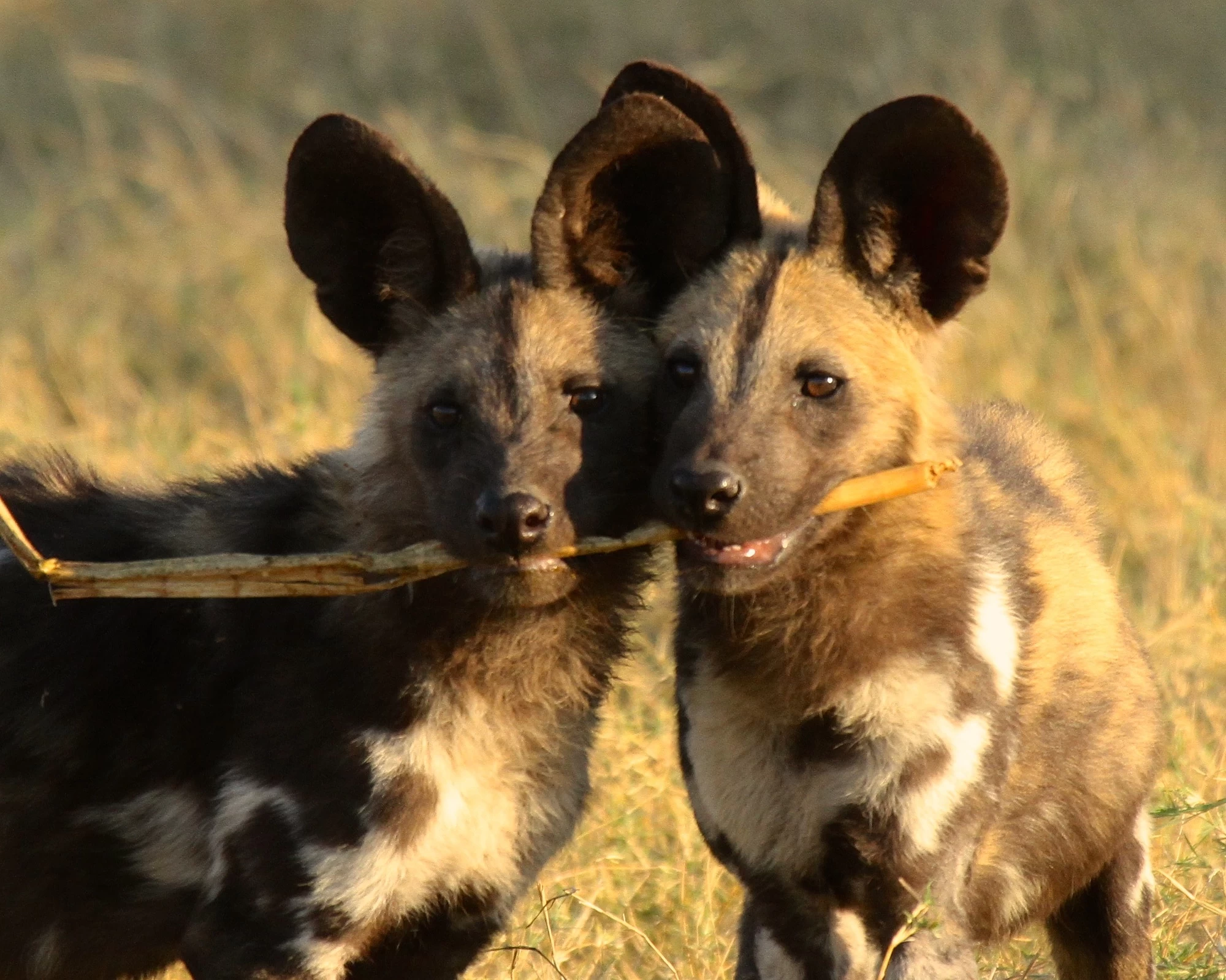
This is not the rosette-covered stealth of a leopard or the tawny mass of a lion. This is something rarer, more elusive, the African wild dog. Each one is unique, its pattern as individual as a human fingerprint. To the people of Tanzania, they are both familiar and mysterious, creatures that seem to belong entirely to the wild, appearing and vanishing like ghosts on the wind. These painted wolves live in tight-knit packs bound not just by survival but by deep social bonds. Within these families, there is no lone hunter’s pride. They move together, rest together, care for one another’s pups. Every individual plays a role, hunters leading the chase, guards standing watch, others staying behind to feed and protect the young. They are in constant communication, trading a vocabulary of yips, chirps, and even sneezes, which can signal when a hunt should begin. When the pack hunts, it is like watching a living river flow across the savannah. They fan out, closing in on their quarry with a mixture of strategy and instinct. While many predators rely on surprise, the painted wolf’s strength lies in endurance. They can run for kilometers, holding speeds that would leave a human sprinter gasping in seconds. At full tilt, they reach 60 kilometers an hour, long legs devouring the distance. Prey animals may dodge and weave, but the pack’s coordination is relentless. In open terrain, their hunts succeed more than eight times out of ten, a rate no big cat can match.
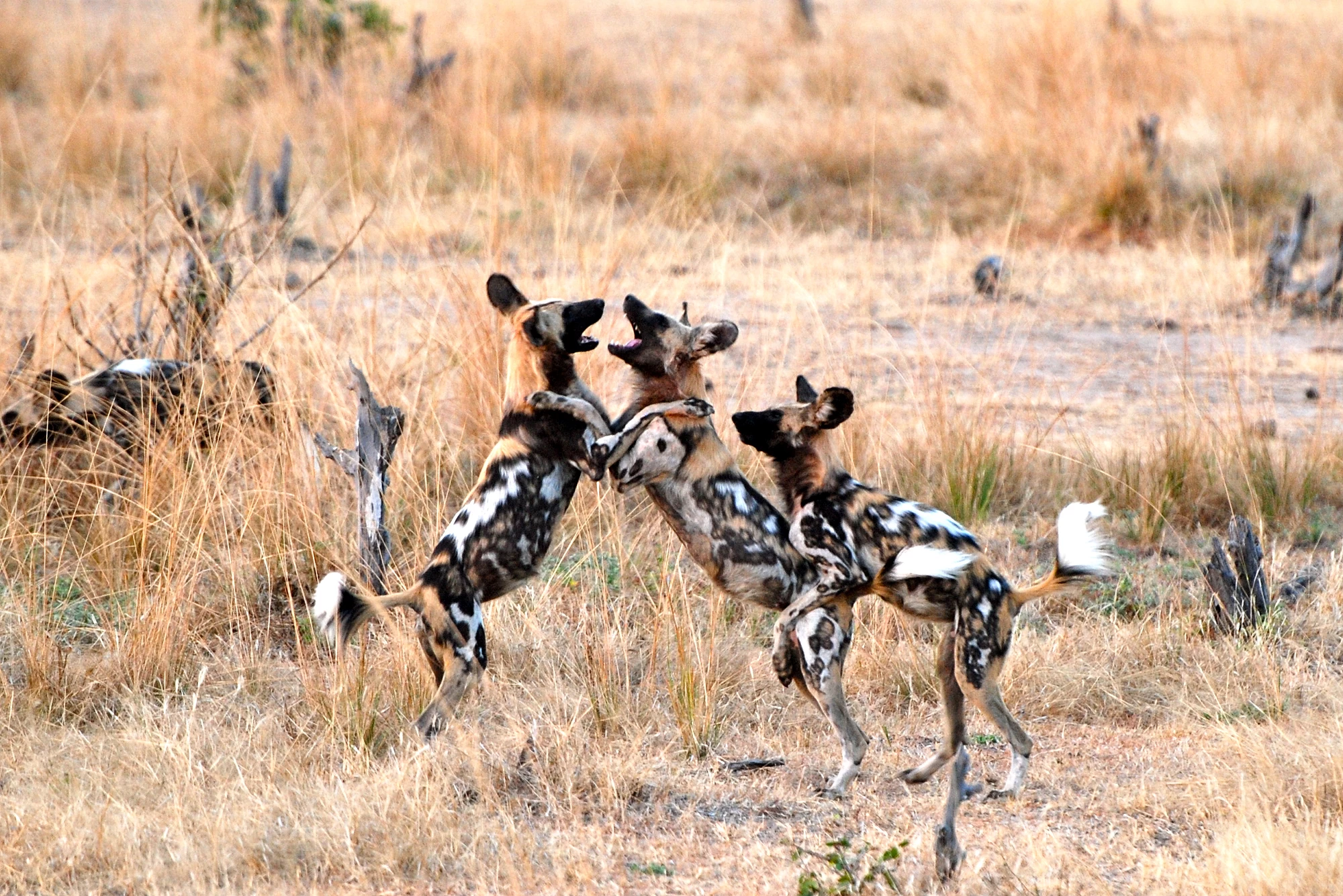
But this extraordinary skill is no longer enough to secure their place in the wild. Once, painted wolves ranged across nearly all of sub-Saharan Africa. Today, they are confined to scattered strongholds, their total adult population somewhere between 3,000 and 6,600.
Tanzania holds some of the last great refuges, in the Ruaha–Katavi ecosystem, where rivers carve through dry grasslands, and in the vast Selous–Nyerere landscape, a wilderness larger than many countries. Yet even here, their survival is far from guaranteed.
The threats are many and constant. The first is the steady loss of space. Farmland pushes deeper into wilderness every year, the fields spreading in waves of maize, cassava, and sunflower. Roads and settlements carve the land into smaller, disconnected fragments. These changes don’t just reduce the area where wild dogs can roam, they also fracture packs, cutting them off from the mates and territories they need to thrive. Roads bring another danger, vehicles that can kill a dog in an instant, especially when a pack is in full chase, too focused on the hunt to notice what’s coming.
Where people and painted wolves live close, suspicion often simmers. Wild dogs are swift hunters, but they are sometimes blamed for livestock losses, even when evidence is scarce. Retaliation can be swift and brutal. In some areas, poisoned carcasses are left out, an act that can erase an entire pack overnight. In other places, the threat comes in the form of wire snares set for antelope and other game. A wild dog caught in a snare may suffer for hours or days before dying, unseen and unmoaned.
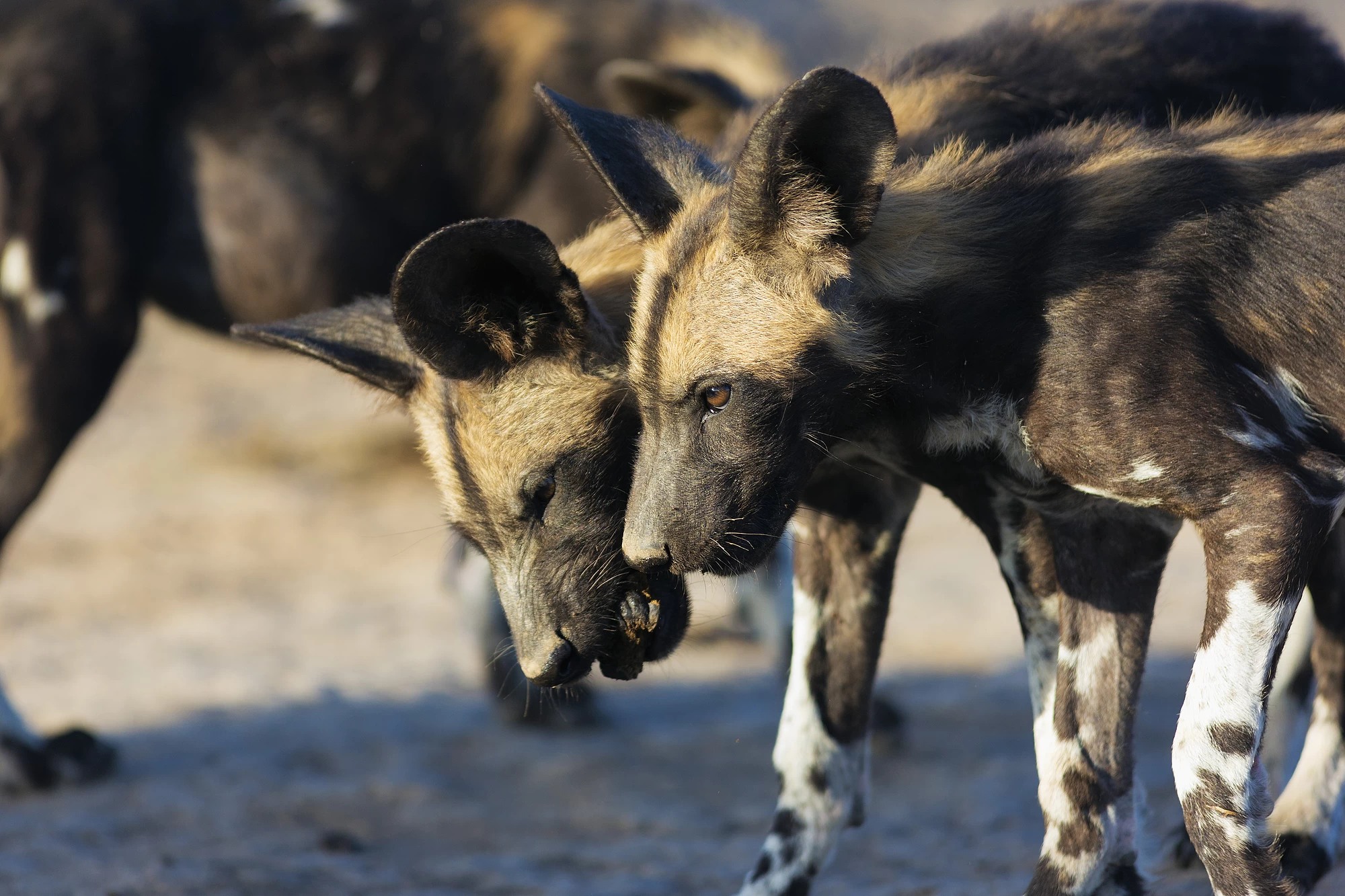
Invisible enemies are no less dangerous. Rabies and canine distemper, carried by unvaccinated domestic dogs in nearby villages, can sweep through a pack with shocking speed. Their close social nature, constant nuzzling, face-licking, playful wrestling, makes them deeply vulnerable to contagious disease. Entire packs have disappeared in less than a week after a single animal became infected.
Even in the absence of humans, painted wolves face formidable rivals. Lions will kill them on sight, not for food, but to eliminate competition. Hyenas follow them, waiting for a kill to be brought down so they can bully the smaller predators away. Every carcass lost is energy gone to waste, energy that might mean the difference between pups fed and pups starving.
And yet, for all the dangers, the story of Tanzania’s painted wolves is not without hope. Across the country, conservationists and local communities are fighting to give these predators a future. Modern technology has become a critical ally. GPS collars now trace the movements of entire packs, revealing not only where they travel but how they live. From these patterns, scientists can identify denning sites, monitor seasonal migrations, and spot areas where the dogs are at high risk from roads or human settlements. When danger approaches, interventions can be swift, relocating a snare, vaccinating nearby domestic dogs, or rerouting a development project.
But technology is only part of the answer. In many villages, people themselves have become the wild dogs’ guardians. These are local men and women who monitor packs,track their health, and serve as educators for their communities. They speak for the painted wolves at village meetings, explaining that these predators are not mindless killers, but part of a larger balance that benefits the entire ecosystem. Their work is changing perceptions, replacing fear with understanding, and turning former adversaries into allies.
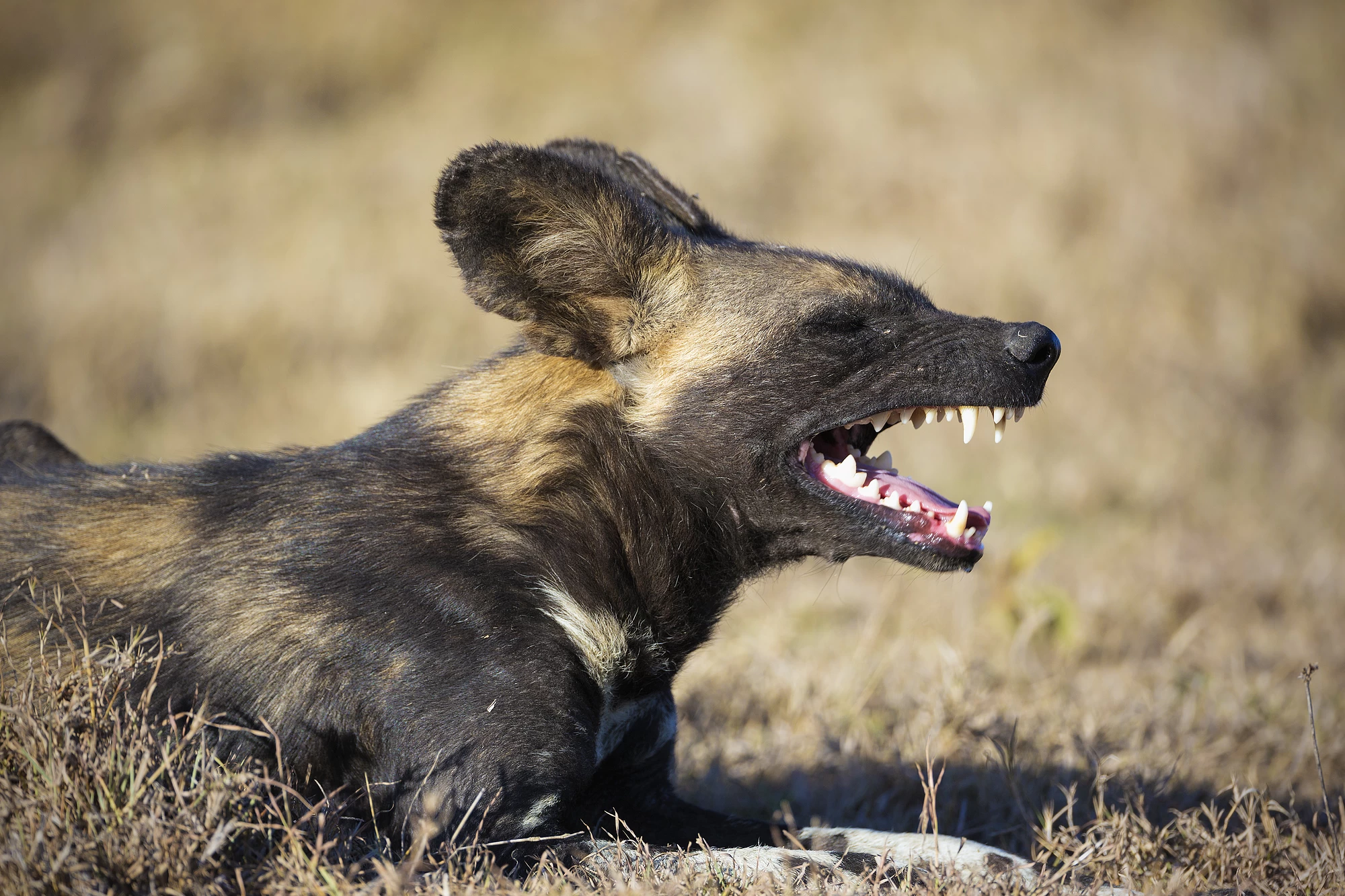
Vaccination campaigns are pushing back against disease outbreaks, moving from village to village to inoculate domestic dogs. Predator-proof livestock enclosures are being built, simple structures, but strong enough to keep cattle and goats safe through the night. Every pen built means fewer reasons for farmers to take up arms against predators.
In southern Tanzania, a larger vision is being realized. WWF Tanzania has committed to restoring and protecting vast wildlife corridors between southern Tanzania and northern Mozambique. These corridors are more than lines on a map, they are lifelines that allow painted wolves to move freely, to disperse from overcrowded territories, and to find mates from other populations, keeping their gene pool healthy. Without such corridors, isolation would erode their resilience over time.
Ecotourism offers another thread of hope. For many visitors, seeing a painted wolf in the wild is a highlight that rivals any lion sighting. Their rarity makes them a treasure for safari guides and tourists alike. In areas where tourism brings in money for schools, healthcare, and infrastructure, the wild dog becomes more than a predator, it becomes an economic asset, worth more alive than dead.
Saving the painted wolf is not simply about sentiment. These animals are a cornerstone species. Their hunting keeps prey populations healthy, removing the sick and weak, allowing plants and habitats to recover and thrive. Their presence ripples outward, touching every part of the ecosystem. Lose them, and the savannah begins to change in ways that are often invisible at first, but which grow harder to reverse over time.
There is also something less tangible but no less real, a sense that their survival is bound to our own understanding of the wild. On certain mornings, before the heat rises and the cicadas begin their steady chorus, a pack sets out across the savannah. The grass parts around them, tails tipped in white flicking like signals as they move. They trot in perfect rhythm, every step a product of instinct honed over millennia. In their movement is the story of Africa itself, its resilience, its beauty, its fragility.
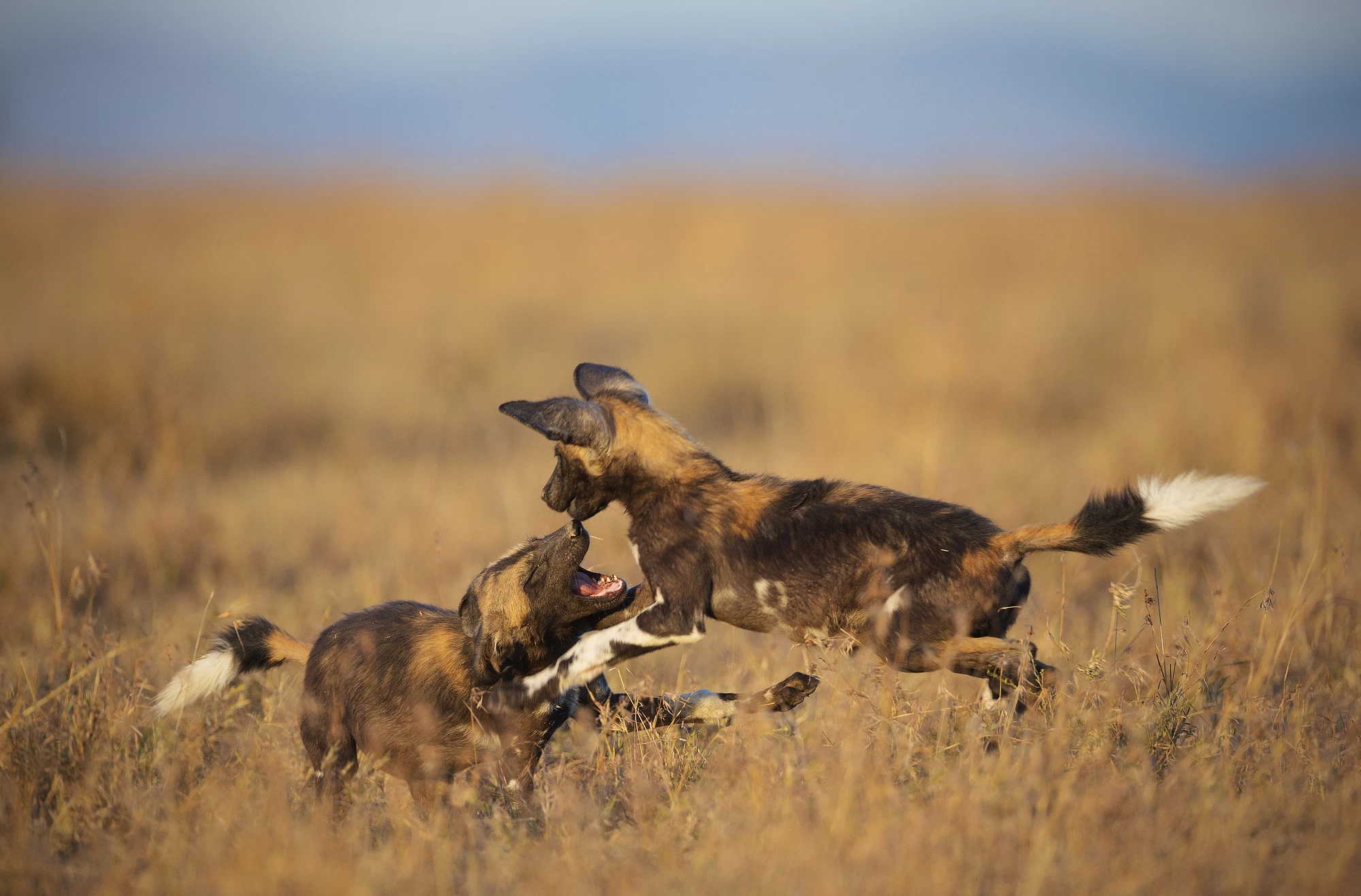
The fate of Tanzania’s painted wolves will be decided in countless small moments, in the choice of a farmer not to set out poison, in the successful vaccination of a dog at the edge of a village, in the survival of a litter of pups through their first dangerous months. It will be
decided in meetings between conservationists and policymakers, in the allocation of funds to protect corridors, in the vigilance of rangers who patrol the edges of the wild.
For now, somewhere beyond the last fence, a pack is on the move. The sun climbs higher, warming the earth beneath their paws. Ahead lies the possibility of a hunt, the chase, the bond that ties them together. They run because they must, because this is the life the savannah has written into their blood. The hope, shared by scientists, villagers, and anyone who has ever been lucky enough to see them, is that they will keep running for generations yet to come.
